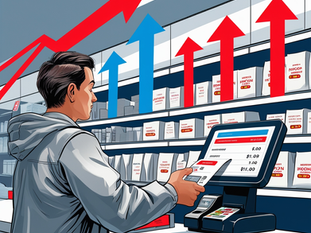
“How to Mitigate Tariff Costs as a U.S. Importer or Reseller”
0
2
1

Tariffs can feel like a silent tax on your business. Whether you’re importing bulk parts for assembly or reselling finished goods, the cost of doing business has climbed sharply in recent years. With tariffs on Chinese imports still in place—and no clear end in sight—U.S. importers and resellers must adapt to stay profitable.
This guide dives into actionable tactics to help mitigate those costs and protect your margins.
Table of Contents
1. Understand the Real Impact of Tariffs
3. Consider Country of Origin Shifts
4. Use Tariff Engineering Legally
5. Leverage Free Trade Agreements
6. Pass Along Costs Strategically
7. Stay Updated and Audit Regularly
1. Understand the Real Impact of Tariffs
Before you act, assess the full scope of tariff exposure in your operation. Review:
Your product classifications under the Harmonized Tariff Schedule (HTS)
Total duties paid over the past 12 months
Suppliers’ current markup and ability to renegotiate
How much of your cost base is from tariffed goods
Understanding your exact exposure allows for smarter decisions in supply chain restructuring.
2. Optimize Your Supply Chain
U.S. importers and resellers can reduce landed costs through:
Consolidated shipping to reduce per-unit freight expenses
Nearshoring or dual-sourcing to increase flexibility
Negotiating better Incoterms (e.g., FOB vs DDP) with suppliers
Partnering with freight forwarders or 3PLs that specialize in tariff-sensitive cargo
Small tweaks in logistics can yield significant savings over time.
3. Consider Country of Origin Shifts
One effective way to reduce tariff costs is shifting production to lower-tariff countries. Many U.S. companies are now sourcing from:
Vietnam
Mexico
India
Indonesia
Shifting operations must be balanced with considerations like quality control, transit times, and long-term supplier reliability—but the savings can be worth it.
4. Use Tariff Engineering Legally
“Tariff engineering” refers to modifying your product or its classification to legally qualify for a lower duty rate. Examples include:
Importing goods unassembled if the HTS code is more favorable
Changing a product’s composition or structure to alter its classification
Working with customs brokers to reclassify outdated product codes
Always consult legal and compliance professionals to stay on the right side of U.S. Customs.
5. Leverage Free Trade Agreements
If your product qualifies, consider taking advantage of:
USMCA (for Mexico and Canada sourcing)
GSP (Generalized System of Preferences, for select developing countries)
Other bilateral FTAs with countries like South Korea, Australia, and Singapore
FTAs often lower or eliminate tariffs altogether for qualifying goods.
6. Pass Along Costs Strategically
While not ideal, you may need to adjust your pricing structure to remain sustainable. Here’s how to do it smartly:
Increase prices gradually or selectively
Offer bundles or value-add services to justify the increase
Communicate transparently with B2B customers about cost pressures
Highlight shifts in quality, origin, or service to support pricing
Protecting customer trust while staying profitable is a delicate but essential balance.
7. Stay Updated and Audit Regularly
Tariff landscapes change with politics. Make it a habit to:
Monitor USTR and CBP updates
Subscribe to trade law newsletters
Conduct periodic compliance audits of HTS classifications
Maintain detailed documentation for duty refunds or drawback claims
Staying agile gives your business a competitive edge in an uncertain trade environment.
Don’t let rising import costs eat into your profits. Use these tips to stay ahead of the curve and protect your margins. 👉













Tentang kami kabar4d